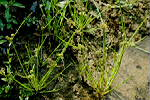
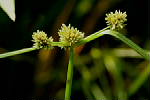
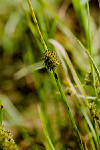
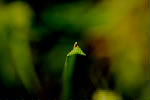
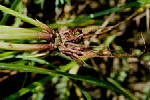
Botany Biology Phenology Ecology Distribution Agricultural importance Chemical control
| Description : | Terrestrial, annual or perennial, tufted erect herb. Roots fibrous, white or brown. Stem triangular, solid, glabrous. Stipules absent. Leaves simple, not lobed or divided, alternate spiral, sessile, linear, more than 2 cm long/wide, margin entire, apex acute, base clasping, parallel-veined. Leaf sheath present, triangular or round in cross section. Flowers bisexual, grouped together in a terminal umbel, sessile, yellow, petals absent. Fruit a nut. |